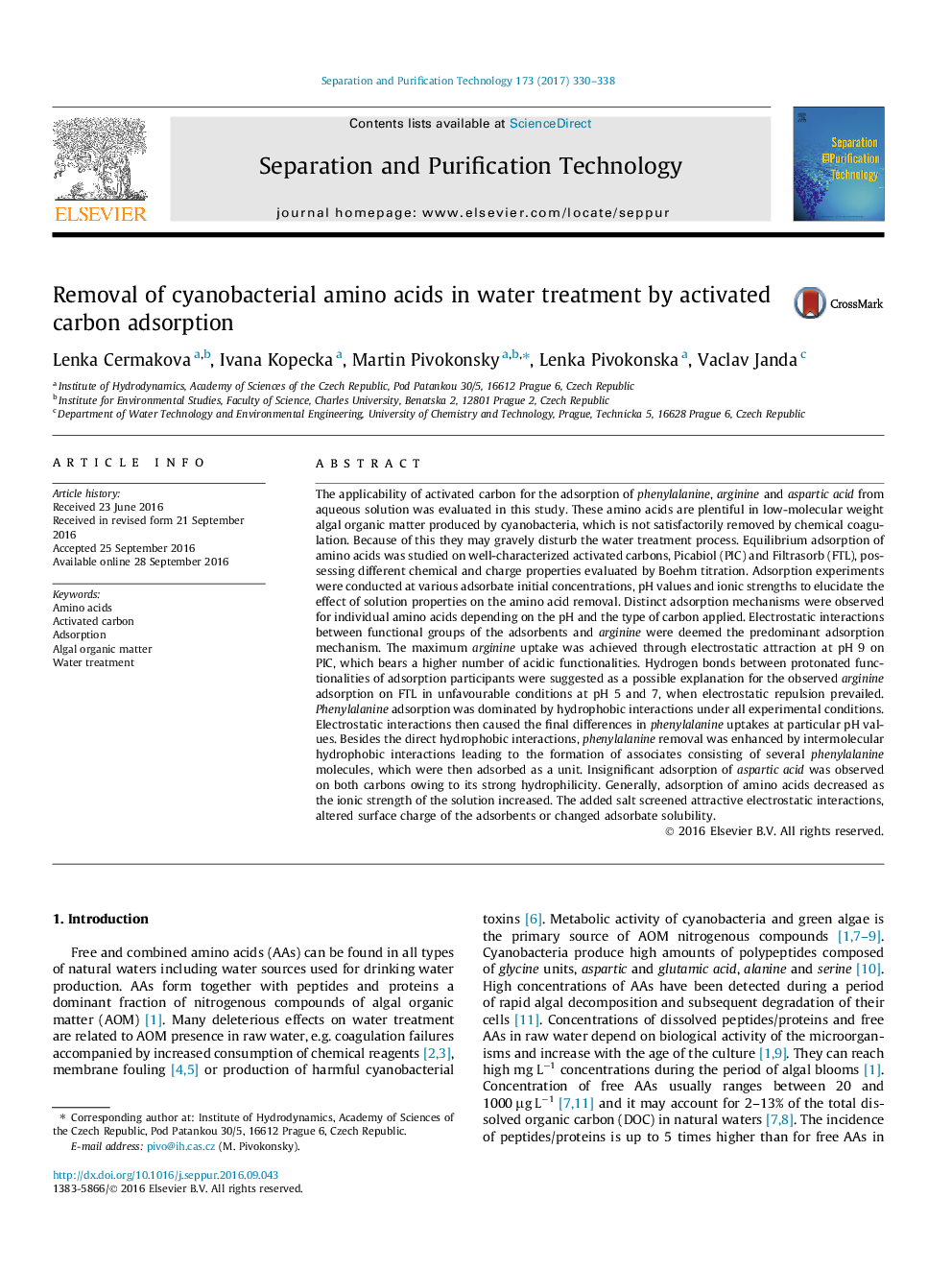| Article ID | Journal | Published Year | Pages | File Type |
|---|---|---|---|---|
| 4990308 | Separation and Purification Technology | 2017 | 9 Pages |
Abstract
The applicability of activated carbon for the adsorption of phenylalanine, arginine and aspartic acid from aqueous solution was evaluated in this study. These amino acids are plentiful in low-molecular weight algal organic matter produced by cyanobacteria, which is not satisfactorily removed by chemical coagulation. Because of this they may gravely disturb the water treatment process. Equilibrium adsorption of amino acids was studied on well-characterized activated carbons, Picabiol (PIC) and Filtrasorb (FTL), possessing different chemical and charge properties evaluated by Boehm titration. Adsorption experiments were conducted at various adsorbate initial concentrations, pH values and ionic strengths to elucidate the effect of solution properties on the amino acid removal. Distinct adsorption mechanisms were observed for individual amino acids depending on the pH and the type of carbon applied. Electrostatic interactions between functional groups of the adsorbents and arginine were deemed the predominant adsorption mechanism. The maximum arginine uptake was achieved through electrostatic attraction at pH 9 on PIC, which bears a higher number of acidic functionalities. Hydrogen bonds between protonated functionalities of adsorption participants were suggested as a possible explanation for the observed arginine adsorption on FTL in unfavourable conditions at pH 5 and 7, when electrostatic repulsion prevailed. Phenylalanine adsorption was dominated by hydrophobic interactions under all experimental conditions. Electrostatic interactions then caused the final differences in phenylalanine uptakes at particular pH values. Besides the direct hydrophobic interactions, phenylalanine removal was enhanced by intermolecular hydrophobic interactions leading to the formation of associates consisting of several phenylalanine molecules, which were then adsorbed as a unit. Insignificant adsorption of aspartic acid was observed on both carbons owing to its strong hydrophilicity. Generally, adsorption of amino acids decreased as the ionic strength of the solution increased. The added salt screened attractive electrostatic interactions, altered surface charge of the adsorbents or changed adsorbate solubility.
Related Topics
Physical Sciences and Engineering
Chemical Engineering
Filtration and Separation
Authors
Lenka Cermakova, Ivana Kopecka, Martin Pivokonsky, Lenka Pivokonska, Vaclav Janda,
